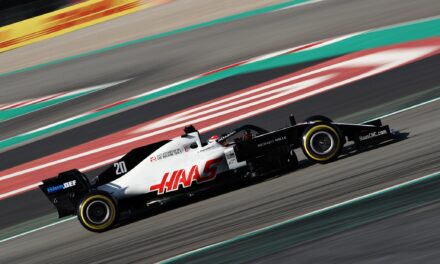During NASCAR’s 2020 season, they ran two road courses at Daytona and Charlotte, the two super-speedways at Daytona and Talladega, and a few short tracks including Bristol, Martinsville, and Richmond. Now there’s nothing necessarily wrong with this, but the racing was pretty bland and the majority of the tracks were 1-2 mile intermediates with a focus on high horsepower and low downforce. Not much regarding engines and downforce is changing as this is the last year we’ll see the Gen-6 car used, but the schedule will see a welcome and much needed upgrade.
Road Courses
As stated earlier, only two road courses were run last year (partially because COVID), but for 2021 they’ve added Sonoma and Watkins Glen back to the schedule. Those two along with the Charlotte ROVAL are the three that have mainly been run over the last few years. NASCAR recently announced though, we’ll also see the return of the Daytona road course for the second race of the season, a week after the Daytona 500 on the oval.
These four tracks were highly likely to be run next year, but no one expected to see the additions of the Indianapolis Motor Speedway road course, Road America, and Circuit of the Americas in Austin, Texas. This has led to debates among fans asking themselves if seven road courses are too much, as it’s a massive step up from two in 2020. It may be a bit too much, but they’re going to try it so might as well see how it pans out.
Bristol Dirt
For many, the most surprising schedule announcement came when NASCAR announced they’d be running the high banked, half-mile at Bristol, but on dirt. The last time the Cup Series ran a race on dirt was all the way back in 1970 at North Carolina State Fairgrounds track, won by “the King” Richard Petty. Bristol will keep it’s second race in September on the concrete surface, as drivers likely wouldn’t be thrilled with a playoff race with massive implications had a style of racing many have never tried.
The reasoning for the conversion to dirt is pretty simple. It’s all a ratings game. FOX wasn’t drawing sufficient numbers for the first Bristol race, so they are trying something new. Bristol‘s capacity is 100,000 fans, so without a pandemic they could’ve easily sold out the “Last Great Colosseum” as fans would’ve definitely wanted to be a part of history. When it comes to the actual racing itself, it’s a toss up. It could be really good, or it could be really bad; maybe even somewhere in between. It’s definitely a must watch though on March 28.
Additions (and Subtractions)
Mile-and-a-half intermediates have become progressively weaker over the last few years. They aren’t that entertaining, and the racing is just not good at some of those tracks. Because of this, NASCAR has taken away Chicagoland Speedway and Kentucky Speedway’s race dates, leaving them open for other tracks.
Dover International Speedway and Texas Motor Speedway both lost one date from their previous two points-paying races too. The racing there had been subpar, so it’s no surprise they’ve decreased the number of races they’ll be getting, although the All-Star race was moved to Texas.
Nashville Superspeedway will see its first race since 2011, as it will host the Ally 400 on June 20. This could be the beginning of a push from NASCAR to possibly land the return of the Nashville Fairgrounds in the coming years, a track many fans want to see back on the schedule.
Although Auto Club won’t be run this year, they’ll be back on the two-mile oval in 2022. However, it’s also been confirmed that after the race the facility will be completely re-done and turned into a banked half-mile short track, a new addition for 2023.
The 2021 schedule is one of great potential, and the final year before the Next-Gen car will be very exciting.
Photo credit: Jared C. Tilton / Getty Images






